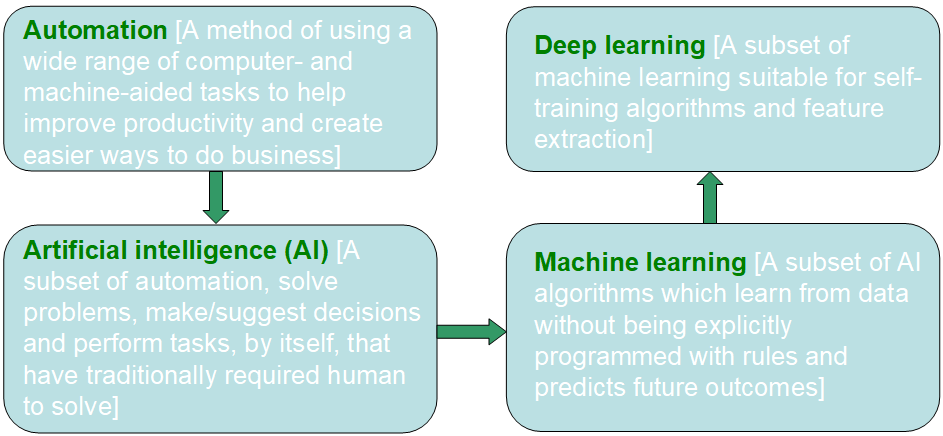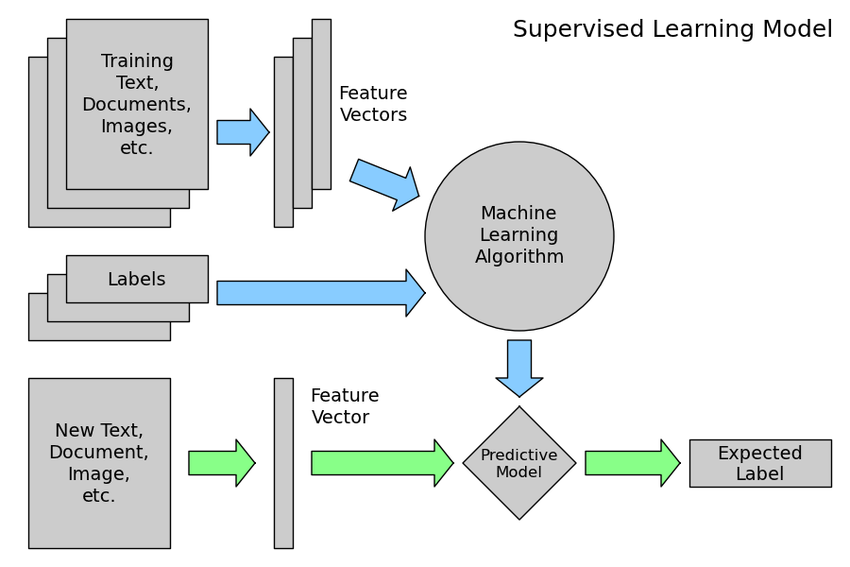Machine Learning and its Techniques
- Integrated Circuits - - An Online Book - |
|||||||||||||||||||||||||||||||||||||||||||||||||||||||||||||||||||||||||||||||||||||||||||||||||||||||||||||||||||||
| Integrated Circuits http://www.globalsino.com/ICs/ | |||||||||||||||||||||||||||||||||||||||||||||||||||||||||||||||||||||||||||||||||||||||||||||||||||||||||||||||||||||
| Chapter/Index: Introduction | A | B | C | D | E | F | G | H | I | J | K | L | M | N | O | P | Q | R | S | T | U | V | W | X | Y | Z | Appendix | |||||||||||||||||||||||||||||||||||||||||||||||||||||||||||||||||||||||||||||||||||||||||||||||||||||||||||||||||||||
================================================================================= Machine learning is computers' learning from existing examples to guess well on new examples. It involves the use of statistical techniques and algorithms to enable machines to learn and make predictions or decisions based on data. Machine learning algorithms typically focus on tasks like classification, regression, clustering, and more, where the algorithm learns from data to make predictions or discover patterns. Some algorithms are not machine learning algorithms, for instance, the KMP algorithm is a classic computer science algorithm designed for efficient string matching and does not involve learning from data or making predictions so that it is not a machine learning algorithm. Machine learning is defined by: Artificial intelligence is a discipline; machine learning is a specific way of solving AI problems. The programs for Machine Learning (ML) become more data-driven, in terms of making decisions or predictions. Machine learning is a is a subset of Artificial Intelligence (AI) as well as a subfield of computer science which is evolved from the study of pattern recognition and computational learning theory in Artificial Intelligence (AI). Machine learning transforms the way we understand and interact with the world around us. Nowdays, machine learning is rapidly changing our world and is rapidly becoming a fixture of our daily lives. Through subtle but progressive improvements where we interact with computers and the world around us, machine learning is progressively making our lives better. In 1959, Arthur Samuel, an American pioneer in the computer gaming field, machine learning, and artificial intelligence has defined machine learning as a "Field of study that gives computers the ability to learn without being explicitly programmed." Overall, machine Learning is a collection of the analysis and construction of algorithms and techniques used to create computational systems that learn from data in order to make predictions and inferences on data. The trick with machine learning is to build a model that generalizes to new cases besides memorizing past cases. As a part of AI, machine learning mainly
comprises three types:
There are many subfields of machine learning: Some machine Learning examples [1-4] are: Table 4514. Three components of learning algorithms used in machine learning.
Machine learning models, like many technologies, will likely never be perfect. They are designed and trained to approximate or generalize from the data they are given, which inherently includes limitations and imperfections. Models can be very effective for a wide range of tasks, but they may still make errors, struggle with complex nuances, or fail in unpredictable ways, especially when confronted with scenarios that deviate from their training data. Their performance can continually improve, but achieving absolute perfection is unlikely due to these inherent constraints.
[1] Daniel Kurian, Fereshteh Sattari, Lianne Lefsrud, and Yongsheng Ma, Using machine learning and keyword analysis to analyze incidents and reduce risk in oil sands operations, Safety Science, 130(2020), 104873.
|
|||||||||||||||||||||||||||||||||||||||||||||||||||||||||||||||||||||||||||||||||||||||||||||||||||||||||||||||||||||
| ================================================================================= | |||||||||||||||||||||||||||||||||||||||||||||||||||||||||||||||||||||||||||||||||||||||||||||||||||||||||||||||||||||
|
|
|||||||||||||||||||||||||||||||||||||||||||||||||||||||||||||||||||||||||||||||||||||||||||||||||||||||||||||||||||||

